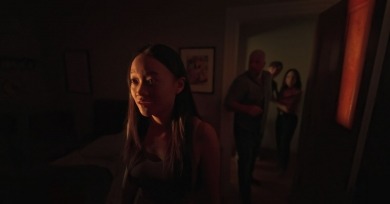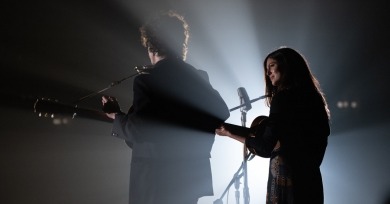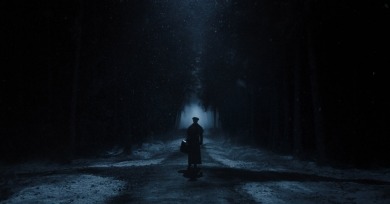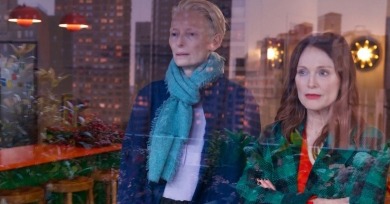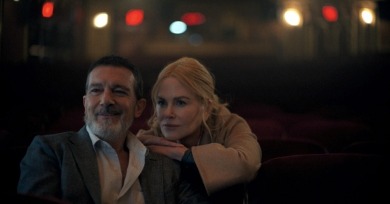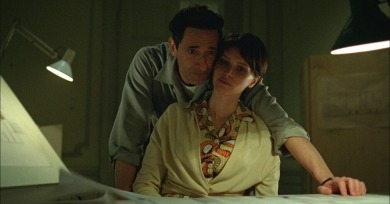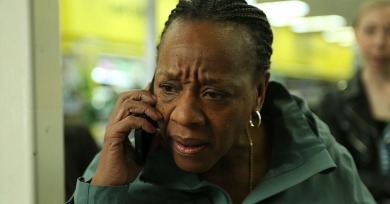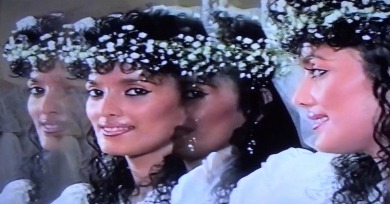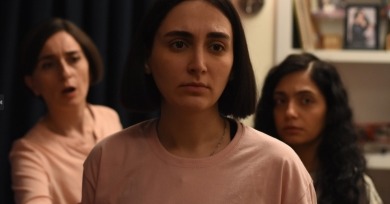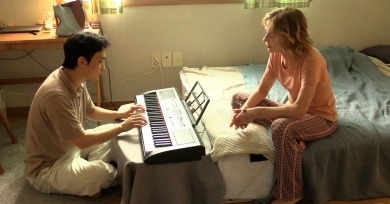Reviews
Soderbergh achieves an effectively fraught air from the jump so that his scenes, even at their stillest, vibrate with the breath-seizing possibility of menace; we are continually and acutely aware that the domestic fracases and solitary activities depicted are being witnessed by eyes without a face.
Its willingness to paint sixties establishment folkies as potentially just as extractive as their more legibly villainous record mogul counterparts would have meant something if the film had any interest in actually investigating the prickly relationship between art and commerce.
Between the writtenness of the text and the flat planes of the modernist upstate house Martha has chosen as the location to end her life, the film’s melodrama tips into abstraction.
Whatever delights the film offers are of the generic variety, teasing at thriller and melodrama conventions while constantly pulling back to the realm of the purely psychological, a tense negotiation of the raw and the sleek as unresolved and tentative as its central adulterous couple’s stabs at kink.
Shot on 35mm in shades of ominous gray by cinematographer Lol Crawley in the mid-century VistaVision format, the film is so gripping moment to moment that it’s almost convincing in its determination to be a definitive American epic.
Oh, Canada, adapted from the novel Foregone by the late Russell Banks, is engrossing and confounding, telling a story that defies simple elucidation. Usually in his films, the mode of confession is the diary. In his most recent films, his protagonists are looking to change their lives in meaningful ways.
Elwood embraces the world around him with rare grace, an attraction to details and a surrender to pure sensation unencumbered by any trace of cynicism. In a few frames, Jomo Fray conveys more of a world than any dialogue might ever hope to express.
Self reflexive, political, and experimental, the filmisessentially the Carax take on Histoire(s) du cinéma (1988), in which Godard stitched together clips from hundreds of films in order to create his own critique of the art form.
These killers are seldom forced to face their victims, and because of this, they are free to live in a sanitized world of rationalizations and moral fantasies, remaining comfortable even as the earth and its inhabitants are dying just outside their doors.
Under the cover of blackout curtains, a woman jolts herself awake with a hair-raising shout. She catches her breath, but cannot shake off her ring of panic, the quiver and cold sweat of constant fear. This will be one of the more peaceful moments of her day.
Abrahams frequently shifts aesthetic registers, from stylized vignettes to handheld observation, introspective narration to candid conversation, the heightened past to the quotidian present. Abrahams has explained that she wanted to evoke sense-memory, as if inviting the viewer into her own state of mind.
Mohammad Rasoulof is part of a rich legacy of courageous Iranian filmmakers who have bravely challenged the authority and inevitability of the Islamic Republic, through resistance films that have often left them exiled from the homeland and people their art is fighting for.
In collaboration with Huppert, who has seldom appeared so playful and unguarded, he depicts Iris as supremely attentive and sympathetic to her students, while challenging them to dig deeper and shine a light on the thornier parts of themselves that they tend to keep buried.
